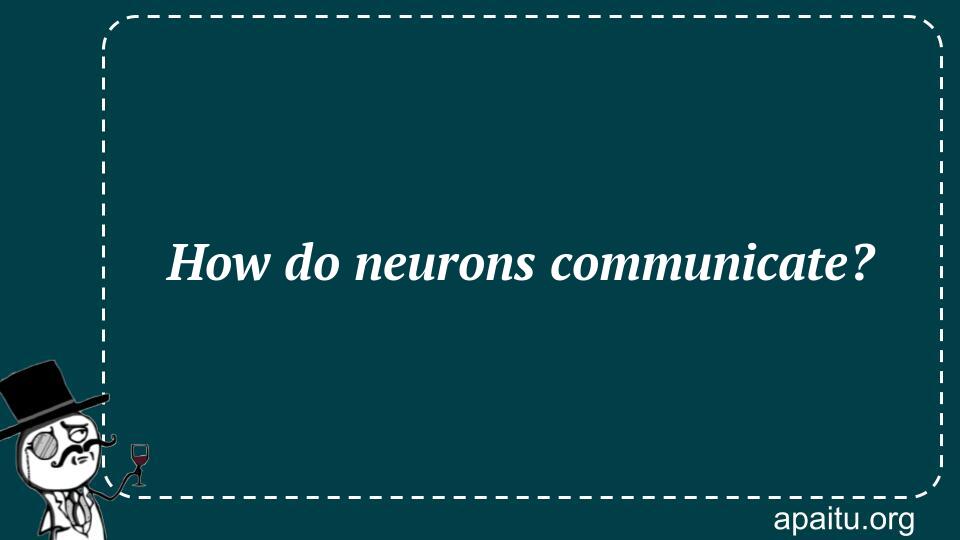Question
Here is the question : HOW DO NEURONS COMMUNICATE?
Option
Here is the option for the question :
- Chemically
- Electrically
- Fluidly
- Chemically and electrically
The Answer:
And, the answer for the the question is :
Explanation:
Electrical impulses and chemical messengers both play a role in the communication processes of the nervous system. Channel proteins are responsible for the transmission of electrical impulses from neuron to neuron, whereas neurotransmitters are the ones responsible for the transmission of chemical signals in this manner. Deficits in the body can be the cause of many neurological illnesses because they interfere with the transmission of information, either electrically or chemically.

Neurons, the specialized cells that make up the nervous system, communicate with each other through a combination of chemical and electrical signals. This process of communication is crucial for the proper functioning of the nervous system, allowing neurons to coordinate with each other and transmit information throughout the body.
Chemical communication between neurons occurs through the release of neurotransmitters, which are chemical messengers that transmit signals between neurons. When a neuron receives a signal, it triggers the release of neurotransmitters from its axon terminal, which diffuse across the synapse and bind to specific receptors on the receiving neuron. This binding process can either excite or inhibit the receiving neuron, depending on the type of neurotransmitter and receptor involved.
Electrical communication between neurons occurs through the movement of ions, which are charged particles that carry electrical signals. Neurons generate electrical signals through changes in the distribution of ions across their cell membranes. When a neuron receives a signal, it causes a brief change in the distribution of ions, which generates an electrical impulse called an action potential. This action potential travels along the neuron’s axon and triggers the release of neurotransmitters at the axon terminal, initiating chemical communication with the next neuron in the circuit.
The combination of chemical and electrical communication between neurons allows for complex patterns of signaling and information processing. Different types of neurons may use different neurotransmitters and receptors, allowing for fine-tuned control of signaling pathways. Additionally, the strength and duration of the electrical signals generated by neurons can vary, which can influence the magnitude and duration of the resulting chemical signals.
Disruptions to the communication between neurons can lead to a variety of neurological disorders. For example, diseases such as Alzheimer’s and Parkinson’s are characterized by the loss of specific types of neurons and the disruption of neurotransmitter signaling. Additionally, certain drugs and toxins can interfere with the normal functioning of neurotransmitters, leading to changes in behavior and cognitive function.
neurons communicate with each other through a combination of chemical and electrical signals. Chemical communication occurs through the release of neurotransmitters, while electrical communication occurs through the movement of ions. The integration of these two types of signaling allows for complex patterns of information processing and coordination within the nervous system. Understanding the mechanisms of neural communication is crucial for developing treatments for neurological disorders and advancing our understanding of the brain and behavior.